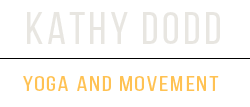Understanding Protein Needs: What You Need to Thrive
Many people think that meeting the recommended daily allowance (RDA) for protein is enough to stay healthy, but it might not be sufficient for thriving. If your goals include building or maintaining muscle, or even fat loss, increasing your protein intake is essential.
Protein is highly satiating, meaning it keeps you full longer. Additionally, research shows that as we age, our bodies become less efficient at absorbing protein. This can be a challenge if we’re not as active or if we’re trying to reduce our overall food intake. For those who don’t enjoy eating meat, getting enough protein can be even harder.
You Don’t Have to Eat Meat to Get Enough Protein
If you love meat, boosting your protein intake might be straightforward. However, it’s entirely possible to get sufficient protein without relying heavily on meat. Protein is crucial for muscle building, and while many foods contain protein, not all are equally effective or rich in essential amino acids. Studies suggest that as long as you’re consuming around 90-120 grams of protein daily, the specific type of protein is less critical. Tracking the protein grams you eat for a couple of days will let you know if you are in the right ball park.
Practical Tips for Increasing Your Protein Intake
Reaching your protein goals can be challenging. It took me some time to find the right balance for recovery from strength training. I think protein powders are a great supplement to reach your goals – I usually consume a scoop of whey protein each day.
Here are three more strategies to help you increase your protein intake with foods you might enjoy:
- Egg whites: You can scramble or microwave these with some veggies or cheese or you can add them to cooked oatmeal (you can’t taste them I promise!) You can even add them to smoothie since the kind you buy in a carton are pasturized and do not need to be cooked.
- Dairy: For those who can tolerate it, dairy is an excellent source of protein and calcium. Some milk brands offer higher protein content and are lactose-free. I enjoy 4 ounces of protein-enriched milk in my latte each morning, adding 9 grams of protein to my coffee. Yogurt is another great option; for instance, one serving of my favorite yogurt provides 19 grams of protein. Pair it with granola, berries, and a touch of maple syrup for a delicious breakfast.
- High-Protein Pasta: There are now plant-based pastas that are rich in protein. I recently made a tuna casserole using chickpea pasta, which provided about 38 grams of protein per serving. While tuna casserole might not be for everyone, it’s a meal I enjoy and it’s a great way to up my protein intake.
Whether you’re aiming to build muscle, lose weight, or both, protein is a key component. I hope these ideas help you incorporate more protein into your diet effectively!
Feel free to reach out if you have any questions or if you have any favorite protein-rich foods to share.

Great newsletter Kathy – LOTS of resources and information. The links are super useful. I’ve started adding more protein to my meal based on your research and recommendations. Thank you
Yay! thanks Sharon!